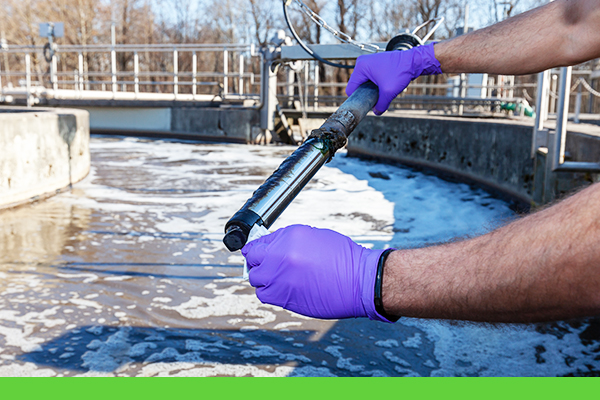New Hampshire Facility Meets Reduced Nitrogen Limits with New Plant and IQ SensorNet System
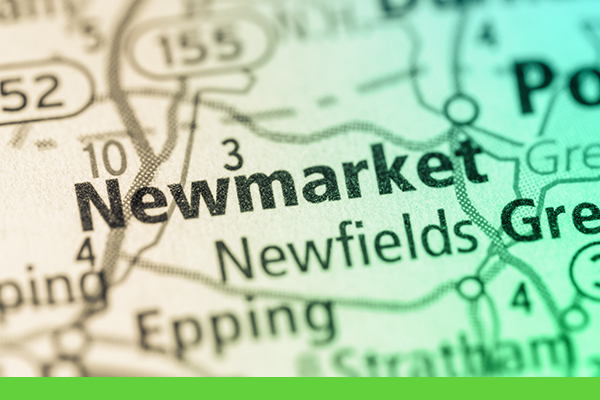
Newmarket, New Hampshire, is located on the banks of the Lamprey River and feeds into a 6000-acre tidal estuary called the Great Bay.
The Great Bay is home to a diverse ecosystem protected by the Great Bay National Estuarine Research Reserve and the Great Bay National Wildlife Refuge. In 2009, a New Hampshire Department of Environmental Services study of the Great Bay raised water quality concerns related to high levels of Total Nitrogen (TN), identifying Newmarket Wastewater Treatment Facility as a source.

View of Newmarket Mills on the Lamprey River in Newmarket, New Hampshire. The Lamprey River feeds into the Great Bay, a 6000-acre tidal estuary and home to a diverse ecosystem. The bay is protected by the Great Bay National Estuarine Research Reserve and the Great Bay National Wildlife Refuge.
This discovery brought about an agreement between the EPA and Newmarket that required achieving a TN limit of less than 8mg/L within five years. Newmarket Environmental Services knew that the aging trickling filter process could not meet the TN removal requirement, so they decided to upgrade with a new facility. This new plant, a 4-stage Bardenpho BNR (biological nutrient removal) process, would serve the town’s 3500 residential and commercial users and would be vital to Newmarket meeting their permit. However, to ensure they meet their treatment goals efficiently, an investment in an online instrumentation system to control their process is crucial.
Newmarket’s Selection Process
With such a massive renovation project underway, Newmarket WWTF had ample time to consider the options available for their new online monitoring system. They not only talked to vendors, but they consulted with other utilities. Sean Greig, Environmental Services Director for Newmarket, said that the decision was not an easy one to make. They decided on YSI’s online monitoring system, IQ SensorNet, because its sensors have a reputation for being long-lasting and easy to maintain. Newmarket values the reliability and ease of replacing the ammonium and nitrate electrodes on the ISE sensors. Also, the DO and TSS sensors require remarkably low maintenance and minimal calibration over the life of the sensors.
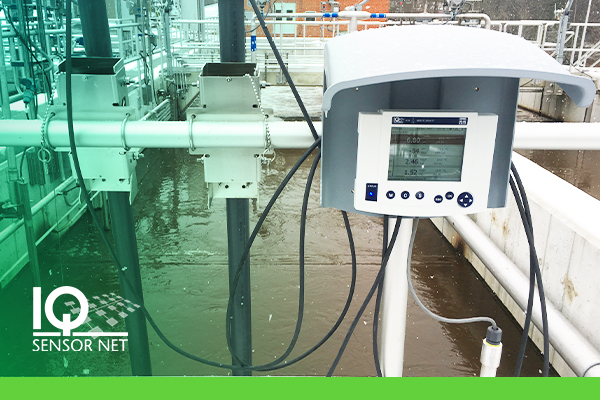
Another benefit that stood out during the selection process was IQ SensorNet’s wireless capabilities. Wireless radio communication allows technicians to install their sensors anywhere in the facility and reduce challenging cable runs. Newmarket also knew they would want to add to the system over time, so adding new measuring locations in the future would be exceptionally easy
Newmarket’s Monitoring System
Newmarket installed a 2020 3G controller system with pH/ORP (SensoLyt®), DO (FDO), and turbidity (VisoTurb®) sensors and later added ammonium/nitrate sensors (VARiON®). Continuous measurements from a pH sensor in the influent and pH and DO sensors in the effluent help operators achieve their treatment goals, satisfy discharge permit reporting requirements, and verify compliance.
Additional sensors such as ORP, pH, TSS, ammonia, and nitrate sensors deployed throughout the BNR system enable operators to control the process more efficiently. These parameters can automatically adjust aeration output and chemical dosing based on set points and conditions, resulting in energy and chemical savings. Once Newmarket had installed the IQ SensorNet system, they uncovered more benefits and features that demonstrated the value of YSI sensors. The first is data.
“It was a really tough decision, but in the end, YSI was the better product.” -Sean Greig
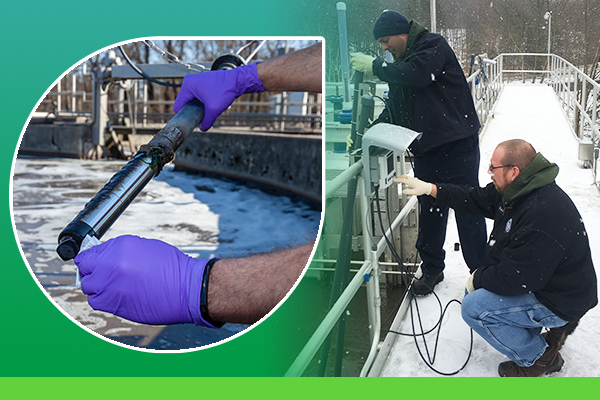
Benefits of YSI’s IQ SensorNet System
Data is undoubtedly valuable, but it must be accessible and easily understood. The IQ SensorNet system gives you access to real-time data, which provides helpful information about how your plant performs and can alert you to any current issues. As beneficial as real-time data is, Sam Heffron, Lab Technician in charge of Operations, said that the trending and easy-to-read format is even more valuable. These benefits help to optimize processes, increase efficiency, lower energy use, and deliver compliance reporting. Heffron was also impressed with YSI’s technical support. “We had issues with a couple of the probes and cables, and YSI was right on it, helping me troubleshoot the issue. I never had to chase after anyone,” said Heffron. “It turned out that one of the cables was faulty. I got a new one right away. There were no questions; they just took care of it, which was great.” (Check out another success story, Ammonia Based Aeration Control Improvements Through Sensor Placement).
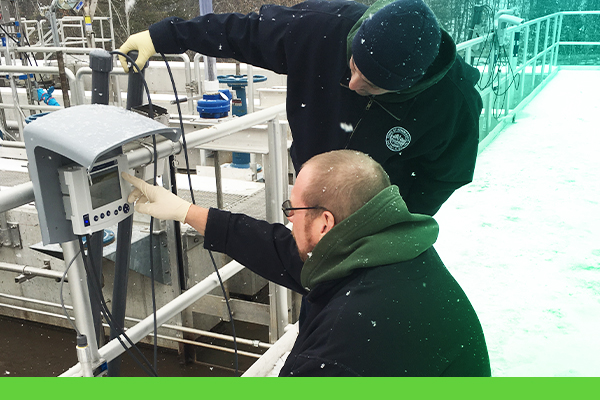
“I’ve had a great experience with the system. The units have been user-friendly and data-friendly so far, as I can easily track the data. I’ve had to install a couple of units after the fact, and that went well, as it was straightforward. I think we saved a pretty good amount of money by doing that.” -Sam Heffron
Another thing that stood out to Greig and Heffron was that YSI had a trained representative come onsite and train their team on the IQ SensorNet system. A hands-on demonstration is always beneficial, no matter how easy something is to set up and commission. All YSI customers can take advantage of onsite training by contacting your local YSI representative.
Cost Savings
Among all of the benefits of IQ SensorNet, cost savings may be the most valuable. In Greig’s opinion, one of the most significant savings is their reduced ammonia and nitrate testing in their water quality lab. Eliminating tests saves technicians time processing samples and reduces costs on laboratory test kits. Time and expenses add up when conducting tests several times a week, 52 weeks out of the year. Newmarket technicians can use that time doing other tasks. When Newmarket added new sensors to their existing system, they experienced additional cost savings when they didn’t have to bring in specialists for installation and calibration.
Pulling sensors from their packaging, connecting them to the network, and programming them into SCADA is simple. Thanks to IQ SensorNet’s single cable for power and communication, installing new sensors is easier than ever. You no longer need to run conduit for new communication wiring or power drops. In the future, Newmarket plans to add total suspended solids sensors to their system to save time and expenses on solids tests. With online TSS measurement in the aeration basins, technicians can continuously estimate or control SRT (solids retention time) and conduct fewer TSS lab samples. Greig is not only looking for savings when installing online sensors. “I’m also looking for more consistency. Everyone runs lab tests a little bit differently. Sometimes, the numbers differ depending on who is doing the test. The probes provide more consistent results and reduce the chance for human error,” said Greig.
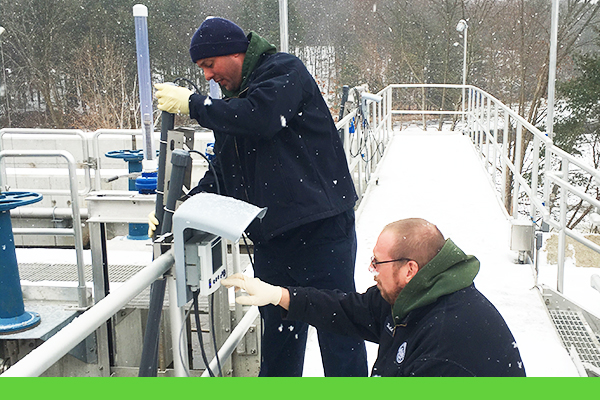
A Positive Environmental Outcome
In 2019, the Town of Newmarket Wastewater Treatment Facility Upgrade project was selected from 30 other projects as the 2019 PISCES Exceptional Project for Region 1. Newmarket WWTF received the award at the CIFA conference in November. It was New Hampshire’s first PISCES nomination and its first PISCES award. But more importantly, Newmarket has shown its commitment to improving the water quality in the Great Bay Estuary by achieving a TN limit of less than 8mg/L.
“The engineers can’t believe how well the plants are running.” -Sean Greig
